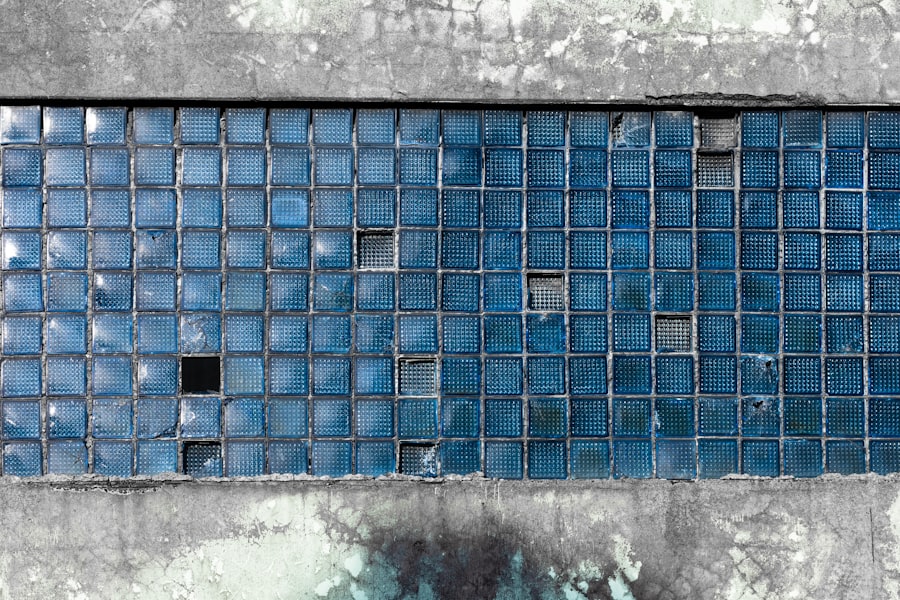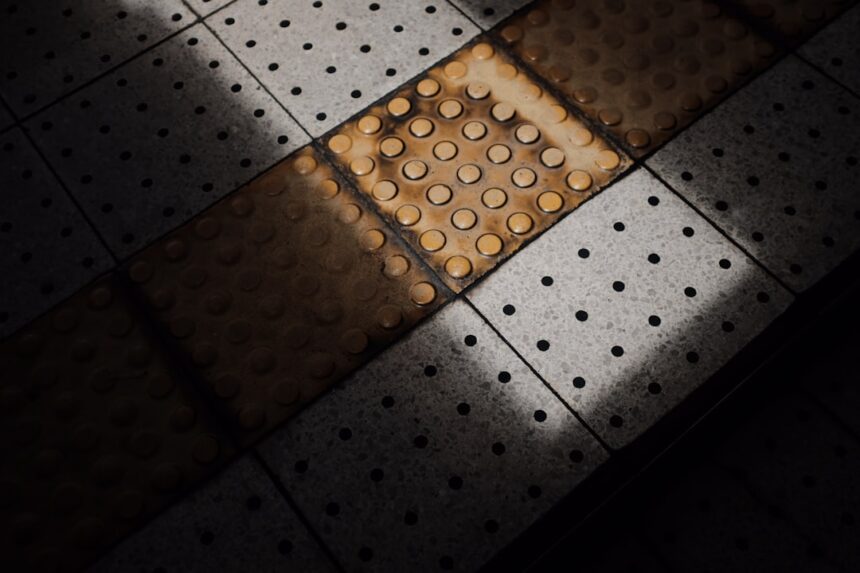Anechoic tiles are specialized materials designed to absorb sound waves, thereby minimizing echo and reverberation. These tiles play a crucial role in various fields, particularly in military applications, where stealth and noise reduction are paramount. The primary function of anechoic tiles is to create a sound-dampening environment, which is essential for submarines that operate in the depths of the ocean.
By reducing the noise generated by submarines, these tiles enhance their stealth capabilities, allowing them to evade detection by enemy sonar systems. The significance of anechoic tiles extends beyond mere sound absorption; they represent a technological advancement that has transformed naval warfare. As submarines have evolved into sophisticated vessels capable of executing complex missions, the need for effective noise reduction has become increasingly critical.
Anechoic tiles have emerged as a key component in this evolution, enabling submarines to operate more effectively in hostile environments while maintaining a low profile. This article will explore the development, challenges, advancements, and future trends of anechoic tiles, highlighting their importance in modern naval warfare.
Key Takeaways
- Anechoic tiles are specialized materials used to reduce the acoustic signature of submarines and other underwater vehicles.
- Early development of anechoic tiles involved the use of rubber and other materials to absorb and scatter sonar waves.
- Anechoic tiles play a crucial role in submarine technology by reducing the detectability of submarines by enemy sonar systems.
- Challenges in early anechoic tile designs included finding materials that could withstand the harsh underwater environment and effectively absorb sonar waves.
- Advancements in anechoic tile materials have led to the development of more durable and effective options, such as composite materials and specialized coatings.
Early Development of Anechoic Tiles
The concept of sound absorption dates back to the early 20th century, but it was not until the advent of submarine technology that anechoic tiles began to take shape. Initially, researchers focused on creating materials that could effectively dampen sound waves in various environments. The early designs were rudimentary and often made from simple materials that lacked the necessary properties for effective sound absorption.
However, as the need for stealth in naval operations became apparent during World War II, the development of anechoic tiles gained momentum. In the post-war era, advancements in materials science led to significant improvements in the design and functionality of anechoic tiles. Engineers began experimenting with different compositions and structures to enhance sound absorption capabilities.
The introduction of rubber and foam-based materials marked a turning point in the development of anechoic tiles. These materials not only provided better sound-dampening properties but also offered durability and resistance to harsh marine environments. As a result, anechoic tiles became an integral part of submarine design, paving the way for more advanced stealth technologies.
Role of Anechoic Tiles in Submarine Technology

Anechoic tiles serve a pivotal role in submarine technology by significantly reducing the acoustic signature of these vessels. Submarines are designed to operate stealthily beneath the ocean’s surface, and any noise they produce can compromise their mission and safety. The incorporation of anechoic tiles into submarine hulls helps to absorb sound waves generated by machinery, water flow, and other operational activities.
This absorption minimizes the likelihood of detection by enemy sonar systems, which rely on sound waves to locate underwater objects. Moreover, anechoic tiles contribute to the overall performance of submarines by enhancing their maneuverability and operational efficiency. By reducing noise levels, submarines can operate at higher speeds without compromising their stealth capabilities.
This advantage allows them to execute tactical maneuvers more effectively, whether it be evading enemy vessels or positioning themselves for strategic strikes. The integration of anechoic tiles into submarine design has thus become a fundamental aspect of modern naval warfare, enabling submarines to fulfill their missions with greater efficacy.
Challenges in Early Anechoic Tile Designs
| Challenges | Early Anechoic Tile Designs |
|---|---|
| 1 | Material selection for absorption |
| 2 | Manufacturing precision for tile shapes |
| 3 | Installation complexity |
| 4 | Maintaining performance over time |
Despite the advancements made in the early development of anechoic tiles, several challenges persisted in their design and implementation. One significant issue was the weight of the materials used. Early anechoic tiles were often heavy and cumbersome, which posed a challenge for submarine designers who needed to balance stealth with buoyancy and speed.
The added weight could affect a submarine’s performance and maneuverability, making it essential for engineers to find lighter alternatives without sacrificing sound absorption capabilities. Another challenge was the durability of early anechoic tile designs. Submarines operate in harsh underwater environments characterized by high pressure, temperature fluctuations, and corrosive saltwater.
Many early materials used for anechoic tiles were not sufficiently resilient to withstand these conditions over extended periods. This limitation necessitated ongoing research and development efforts to create more robust materials that could maintain their sound-absorbing properties while enduring the rigors of submarine operations.
Advancements in Anechoic Tile Materials
As technology progressed, so did the materials used in anechoic tile production. Engineers began exploring advanced composites and synthetic materials that offered superior sound absorption while being lightweight and durable. One notable advancement was the use of specialized foams that could be engineered to specific densities and structures, allowing for enhanced acoustic performance.
These modern materials not only improved sound-dampening capabilities but also provided better resistance to environmental factors such as moisture and temperature changes. Additionally, innovations in manufacturing techniques have allowed for more precise control over tile shapes and configurations. This precision enables engineers to optimize the arrangement of anechoic tiles on submarine hulls for maximum effectiveness.
The development of modular tile systems has also facilitated easier installation and maintenance, ensuring that submarines can remain operational without extensive downtime for repairs or upgrades. These advancements have significantly enhanced the overall effectiveness of anechoic tiles in modern submarine design.
Impact of Anechoic Tiles on Submarine Stealth

The impact of anechoic tiles on submarine stealth cannot be overstated. By effectively absorbing sound waves, these tiles play a crucial role in reducing a submarine’s acoustic signature, making it more difficult for enemy forces to detect its presence. This stealth capability is vital for submarines engaged in reconnaissance missions or strategic strikes, where remaining undetected is essential for mission success.
Furthermore, the integration of anechoic tiles has allowed submarines to operate at varying depths and speeds without compromising their stealth profile. As submarines dive deeper into the ocean or increase their speed during maneuvers, the noise generated by machinery and water flow can increase significantly. However, with advanced anechoic tile designs in place, submarines can mitigate this noise effectively, maintaining their stealth advantage even under challenging operational conditions.
This capability has transformed naval warfare strategies, allowing submarines to engage in covert operations with greater confidence.
Evolution of Anechoic Tile Shapes and Sizes
The evolution of anechoic tile shapes and sizes has been driven by advancements in technology and a deeper understanding of acoustic principles. Early designs were often uniform in shape and size, which limited their effectiveness in certain applications. However, as research progressed, engineers began experimenting with various geometries that could enhance sound absorption across different frequencies.
Modern anechoic tiles come in a variety of shapes and sizes tailored to specific areas of a submarine’s hull. For instance, some tiles are designed with intricate patterns or irregular surfaces that disrupt sound waves more effectively than flat surfaces. This evolution has allowed for more efficient coverage of submarine hulls while optimizing performance across a broader range of frequencies.
The ability to customize tile shapes also enables engineers to address specific acoustic challenges posed by different operational environments.
Modern Applications of Anechoic Tiles
While anechoic tiles are most commonly associated with submarine technology, their applications extend beyond military use. In recent years, these tiles have found utility in various civilian sectors, including aerospace, automotive, and architectural design. In aerospace engineering, for example, anechoic chambers are used to test aircraft noise levels during development phases, ensuring compliance with regulatory standards.
In automotive design, manufacturers utilize anechoic tiles to create quieter cabins by absorbing engine noise and road vibrations. Similarly, architects have begun incorporating anechoic principles into building designs to enhance acoustic comfort in public spaces such as concert halls and theaters. The versatility of anechoic tiles demonstrates their potential to improve sound quality across diverse applications while contributing to advancements in technology and design.
Future Trends in Anechoic Tile Technology
Looking ahead, several trends are likely to shape the future of anechoic tile technology. One significant area of focus is the development of smart materials that can adapt their properties based on environmental conditions or operational requirements. These materials could offer dynamic sound absorption capabilities that adjust according to changes in frequency or intensity levels.
Additionally, advancements in nanotechnology may lead to even more effective sound-absorbing materials with reduced weight and increased durability. Researchers are exploring ways to engineer nanoscale structures that can enhance acoustic performance while maintaining structural integrity under extreme conditions. As these technologies continue to evolve, they hold the potential to revolutionize not only submarine design but also various industries reliant on effective sound management.
Importance of Anechoic Tiles in Naval Warfare
In the context of naval warfare, anechoic tiles represent a critical component that enhances a submarine’s operational effectiveness and survivability. The ability to operate undetected is paramount for submarines tasked with intelligence gathering or strategic deterrence missions. Anechoic tiles provide a tactical advantage by minimizing acoustic signatures that could otherwise expose submarines to enemy detection systems.
Moreover, as naval conflicts become increasingly complex and technologically advanced, the role of anechoic tiles will only grow more significant. The integration of advanced sonar systems and detection technologies necessitates continuous innovation in stealth technologies like anechoic tiles. As adversaries develop more sophisticated means of detection, maintaining a competitive edge through effective noise reduction will be essential for ensuring naval superiority.
Anechoic Tiles as a Key Component in Submarine Evolution
In conclusion, anechoic tiles have emerged as a vital component in the evolution of submarine technology and naval warfare strategies. From their early development to modern advancements in materials and design, these tiles have played a crucial role in enhancing submarine stealth capabilities while addressing various challenges associated with underwater operations. As technology continues to advance, the future of anechoic tile technology holds promise for even greater innovations that will further improve sound absorption and durability.
The importance of anechoic tiles extends beyond military applications; they have found relevance across various industries where effective sound management is essential. As researchers explore new materials and designs, the potential for anechoic tiles to revolutionize both military and civilian sectors remains significant. Ultimately, as submarines continue to evolve into more sophisticated vessels capable of executing complex missions with precision and stealth, anechoic tiles will remain at the forefront of this technological advancement—ensuring that submarines can navigate the depths of the ocean undetected while fulfilling their critical roles in national defense.
These tiles, designed to absorb sound waves and reduce the acoustic signature of submarines, have played a crucial role in underwater warfare. For a deeper dive into the history and evolution of these innovative materials, you can explore a related article on the topic by visiting this page. This article provides insights into the strategic importance of anechoic tiles and their impact on modern naval operations.
WATCH THIS! America’s Nuclear Navy Was Born From Espionage
FAQs
What are submarine anechoic tiles?
Submarine anechoic tiles are specialized acoustic tiles designed to reduce the noise emitted by submarines, making them harder to detect by sonar systems.
When were submarine anechoic tiles first developed?
Submarine anechoic tiles were first developed in the 1960s during the Cold War, as a response to the increasing use of sonar technology for detecting submarines.
How do submarine anechoic tiles work?
Submarine anechoic tiles work by absorbing and dissipating sound waves, reducing the acoustic signature of the submarine and making it more difficult for enemy sonar systems to detect.
What materials are submarine anechoic tiles made of?
Submarine anechoic tiles are typically made of rubber or synthetic polymers, with a honeycomb or ribbed structure to maximize sound absorption.
How are submarine anechoic tiles attached to submarines?
Submarine anechoic tiles are attached to the outer hull of submarines using adhesives or mechanical fasteners, forming a continuous layer of sound-absorbing material.
Have submarine anechoic tiles been effective in reducing submarine detection?
Yes, submarine anechoic tiles have been effective in reducing the acoustic signature of submarines, making them harder to detect by enemy sonar systems.
Are submarine anechoic tiles still used today?
Yes, submarine anechoic tiles are still used today on modern submarines to reduce their acoustic signature and improve stealth capabilities.




